A Brief Guide To Colombian Coffee
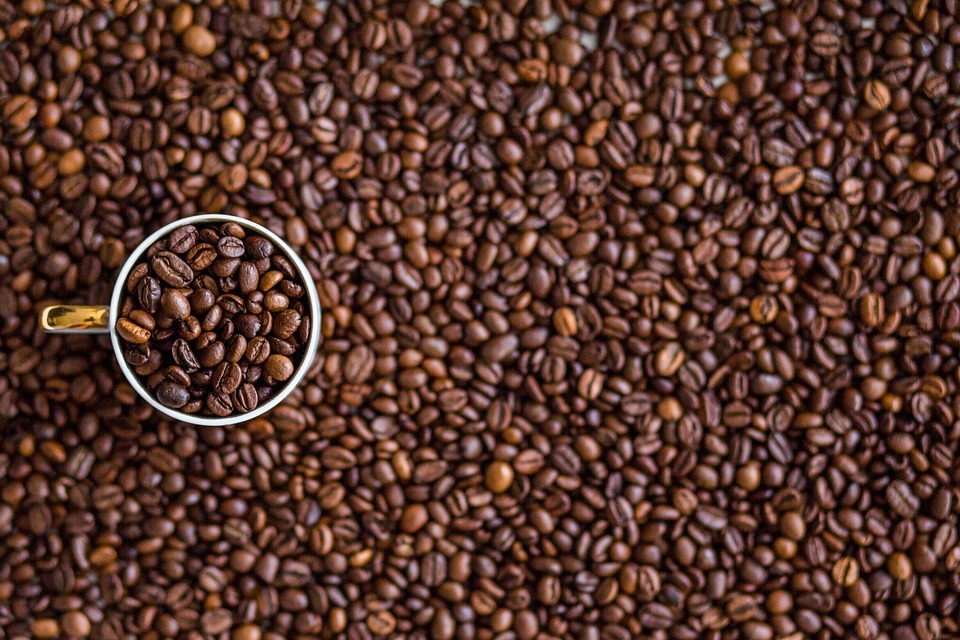
Colombia is the 3rd largest coffee producing nation in the world, behind Brazil and Vietnam. Brazil has long been the world’s largest producer and Vietnam recently moved in the number two spot.
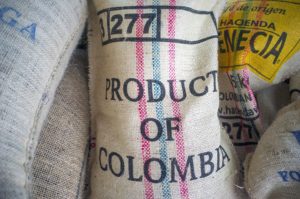
What makes Colombian coffee so special?
Growing Conditions
The near perfect growing conditions in Colombia is what makes the Arabica bean, and Colombian coffee in general, so special. The coffee cultural landscape of Colombia (CCLC) or “Coffee axis”, is Colombia’s primary coffee growing region has a moderately high elevation (4000-6000 feet above sea level), mild climate (62-75 degrees F with an average temperature of 62.6 F) and large amounts of precipitation (approximately 78 inches of rain per year), making the soil some of the richest in the world. The landscape and the cultivation of the landscape are so impressive that UNESCO declared it a world heritage site in 2011.
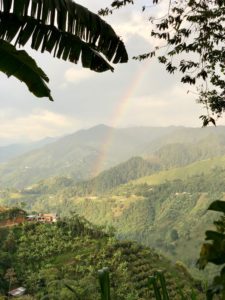
Manizales landscape (with rainbow), a town located in Colombia’s “Coffee axis”
Taste
Arabica beans, while nearly half the caffeine content of Robusta beans (the world’s second most common coffee bean), have a far tastier flavor profile. Arabica beans have a wide range of flavor depending on the soil composition of the region in which they are grown but are typically medium bodied, smooth, rich, sweet and have mellow acidity with notes of chocolate, caramel, nuts, and occasionally hints of apple or orange. The robusta bean typically has a more burnt, rubbery flavor and is almost always sold ground in stores or used in coffee blends. Robusta can be grown at sea level and can tolerate higher temperatures (65-98 degrees F), which makes the flavor much less remarkable. A more depth look at the difference between Arabica and Robusta beans click here.
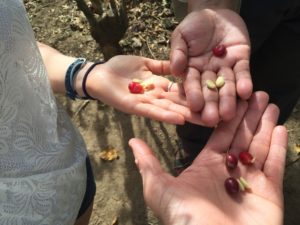
Arabica bean after being removed from the cherry
Colombians Relationship to Coffee
Surprisingly, most Colombians know little about coffee. The majority of quality Colombian coffee is exported, leaving native Colombians to drink instant coffee or tinto, a thick black coffee served in small quantities with lots of sugar. However, the coffee shop culture is beginning to take off in many of the country’s biggest cities as an effort to educate Colombians about its number one export. One example of this can be found at Bernabe, a small, highly recommended coffee shop/restuarant in Salento, Colombia, that serves up delicious cups of coffee to natives and backpackers alike. Here, like many shops, the coffee beans are ground and brought to the table along with the brewing method of choice (Chemex, V60, French press, Syphon, Aeropress or Classic drip). The coffee is prepared and brewed in front of the customer explaining the process step by step along the way, leaving the customer more caffeinated and knowledgable about the product.
Juan Valdez
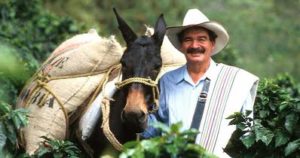
Photo courtesy of sites.google.com
Ahhh, Juan Valdez, the polarizing figurehead of Colombian coffee. Juan Valdez is a fictional character created in 1958 by Colombia’s National Federation of Coffee Growers (FNC) to market 100% Colombian produced coffee around the world. In total, three different individuals have portrayed Valdez, one of whom was Cuban (which I find hilarious).
Juan Valdez is also a Colombian coffee chain that has more than 130 cafes across the country and recently expanded internationally to countries such as Costa Rica, Panama, Chile and even Kuwait. They are Colombia’s version of Starbucks offering higher priced drinks than its competitors and litter middle-high income neighborhoods nationwide.
Colombian opinions on both the figure and the company of Juan Valdez are divided. Some believe he embodies big business and is harmful to the more than 560,000 small coffee producing farms across the country, as the Juan Valdez brand holds sole rights to a large portion of the coffee produced by these farms. Others are thankful for Valdez and believe that he has increased access to quality coffee for many Colombians and improved visibility of Colombian coffee worldwide.
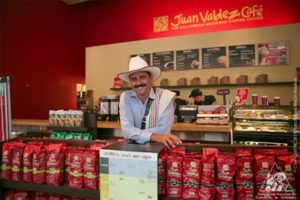
Photo courtesy of 248am.com
Coffee wages
Surprisingly, little information on coffee farmer or picker wages could be obtained while preparing this article. El Ocaso Finca in Salento, Colombia, pays pickers a set amount per kg of coffee cherries picked per day, often ranging up to $13 USD/day. Workers receive housing and food free of charge. The work is risky as pickers have to traverse steep mountains to collect the cherries, preventing machines from doing the job. Multiple Colombians have expressed concern about younger generations choosing not to follow in their family’s coffee producing footsteps, which makes the future of Colombian coffee uncertain.
Take Away
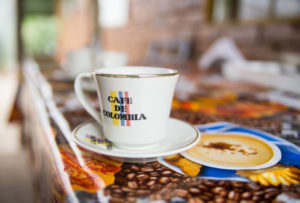
Photo courtesy of Dan Gentile, Thrillist
Coffee is the lifeblood of Colombia but is not without its problems. The people of Colombia produce lots of coffee but know little about the process, although this is slowly changing. Colombian coffee is one of the world’s most popular for a reason: its flavors are diverse and delicious and its beans require lots of work. So go out and purchase a bag of Colombian coffee. But I will leave it up to you as to whether or not that bag is Juan Valdez.